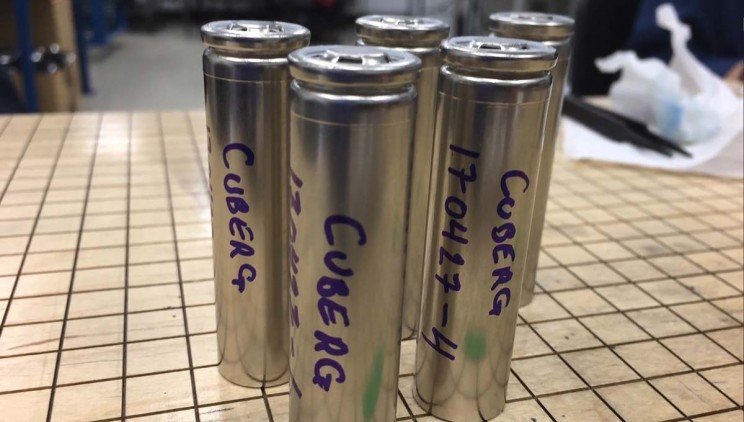Cuberg’s recent test between their battery and a conventional lithium-ion battery resulted in the Cuberg battery keeping a drone flying 70-percent longer. Given that the test is for two packs of equal weight, the result is an impressive one. Cuberg’s co-founder and CEO has prepared for this success since his undergraduate days as a SURF (Summer Undergraduate Research Fellowship) Fellow, putting his summer vacations to good use. He used the knowledge and experience he gained in three summer fellowships to help lead a dozen students “to design and develop innovative and efficient mechanical systems (including HVAC, hot water, insulation, appliances, and more) for the Solar Decathlon net-zero house competition.” The team won first place in the hot water contest and second place in the engineering contest in the Decathlon. Since then, he worked as an intern at Tesla Motors, using “physical, chemical, and electrochemical characterization techniques to study the degradation mechanisms of Li-ion batteries at the Cell Research Lab.” This led …
H2, Where Are You?
Elon Musk publicly disdains hydrogen-powered automobiles, but then he has $5 billion riding on his battery megafactories and continued success with his Tesla line of automobiles. Others with a more disinterested point of view discuss H2’s difficulties – and its promise as a vehicle fuel. America, for instance, has a mere 128 hydrogen fueling stations, and the European Union only 143 as of February 2012. Even with planned expansion of this infrastructure (California is spending $180 million in private and public funds on a planned 46 stations), the landscape might not be ready for large numbers of fuel cell vehicles for a decade or more. For comparison, there are about 29,000 battery-charging stations in the U. S., with both government and private enterprise offering such services. The Kohls store and all Walgreens Pharmacies in my area have plug-in stations for EVs, for instance, and the I-5 freeway, from British Columbia to Baja, California, has stations every 25 to 50 miles. With battery-powered EV and …
3D Printed Power Inverter Meets, Beats DOE 2020 Targets
Reduced weight and component volumes are important for both cars and aircraft, allowing lighter overall construction and greater flexibility in fitting those components into compact spaces. The U. S. Department of Energy has set 2020 targets for things like batteries and power inverters – the device that turns direct current from batteries into alternating current to run electric motors. Researchers at the Department of Energy’s Oak Ridge National Laboratory (ORNL)used 3D printing and “novel silicon carbide (SiC) wide band gap (WBG) semiconductors to craft a prototype power inverter for electric vehicles that is lighter and can handle more power than current units. It nearly meets the DOE’s power density and specific power targets and exceeds the efficiency target handily. Metric DOE 2020 target ORNL prototype Power density 13.4 kW/L 13.33 kW/L Specific Power 14.1 kW/kg 11.5 kW/kg Efficiency >94% Power <99% DOE has put 1.45 million into integrating WGB technology, novel circuit architectures and advanced packaging into electric drive systems. …
I’ll Take Manhattan
While much of battery research goes into crafting the ultimate anode, cathode or electrolyte, there seem to be few efforts, at least to outside observers, of integrated approaches to making a better total battery. That may change soon, with the Department of Energy announcing formation of a new Joint Center for Energy Storage Research (J-CESR, or J-Caesar). Dr. Steven Chu, U. S. Secretary of Energy, has established the Center at Argonne National Laboratory with a budget of $120 million over five years to create a battery five times more powerful and five times cheaper than today’s norms – all within five years. For those of us who’ve grown wary of those “breakthough” announcements that almost always include the line, “researchers say the new product could become a commercial reality in the next five to 20 years,” this may seem too hopeful. Secretary Chu’s announcement included several factors that may alleviate this wariness. The Department is putting up the money, …
Going Over to the Dark Side
The University of Texas at Austin’s press release spells out the quantum-like behavior of photons striking solar cells, and provides some insight into why obtaining higher efficiencies so far has perplexed researchers. “AUSTIN, Texas — The efficiency of conventional solar cells could be significantly increased, according to new research on the mechanisms of solar energy conversion led by chemist Xiaoyang Zhu at The University of Texas at Austin. “Zhu and his team have discovered that it’s possible to double the number of electrons harvested from one photon of sunlight using an organic plastic semiconductor material. “’Plastic semiconductor solar cell production has great advantages, one of which is low cost,’ said Zhu, a professor of chemistry. ‘Combined with the vast capabilities for molecular design and synthesis, our discovery opens the door to an exciting new approach for solar energy conversion, leading to much higher efficiencies.’” Zhu and his team published their discovery December 16 in the journal Science, under the title …
An American ReVolt
ReVolt Technologies LLC, a Swiss battery company founded in 2004 as a spin-off of SINTEF, Norway, is moving its headquarters to Portland, Oregon. Initially targeting the consumer electronics market with their zinc/air battery (compare to the lithium/air batteries IBM is researching – see “Big Blue and Blue Sky Thinking” October 25, 2009) in a grant request to the U. S. Department of Energy for $30 million for research on making large format versions of the battery for vehicles. The company has an alliance with chemical giant BASF. ReVolt claims the following advantages over lithium batteries: A theoretical potential of up to 4 times the energy density of lithium-ion batteries at a comparable or lower production cost. Extended battery life due to stable reaction zone, low rates of dry-out and flooding, and no pressure build-up problems. Controlled deposition with no short-circuit, high mechanical stability. No need for bulky peripherals such as cooling fans or temperature control systems. Generally seen as primary …

